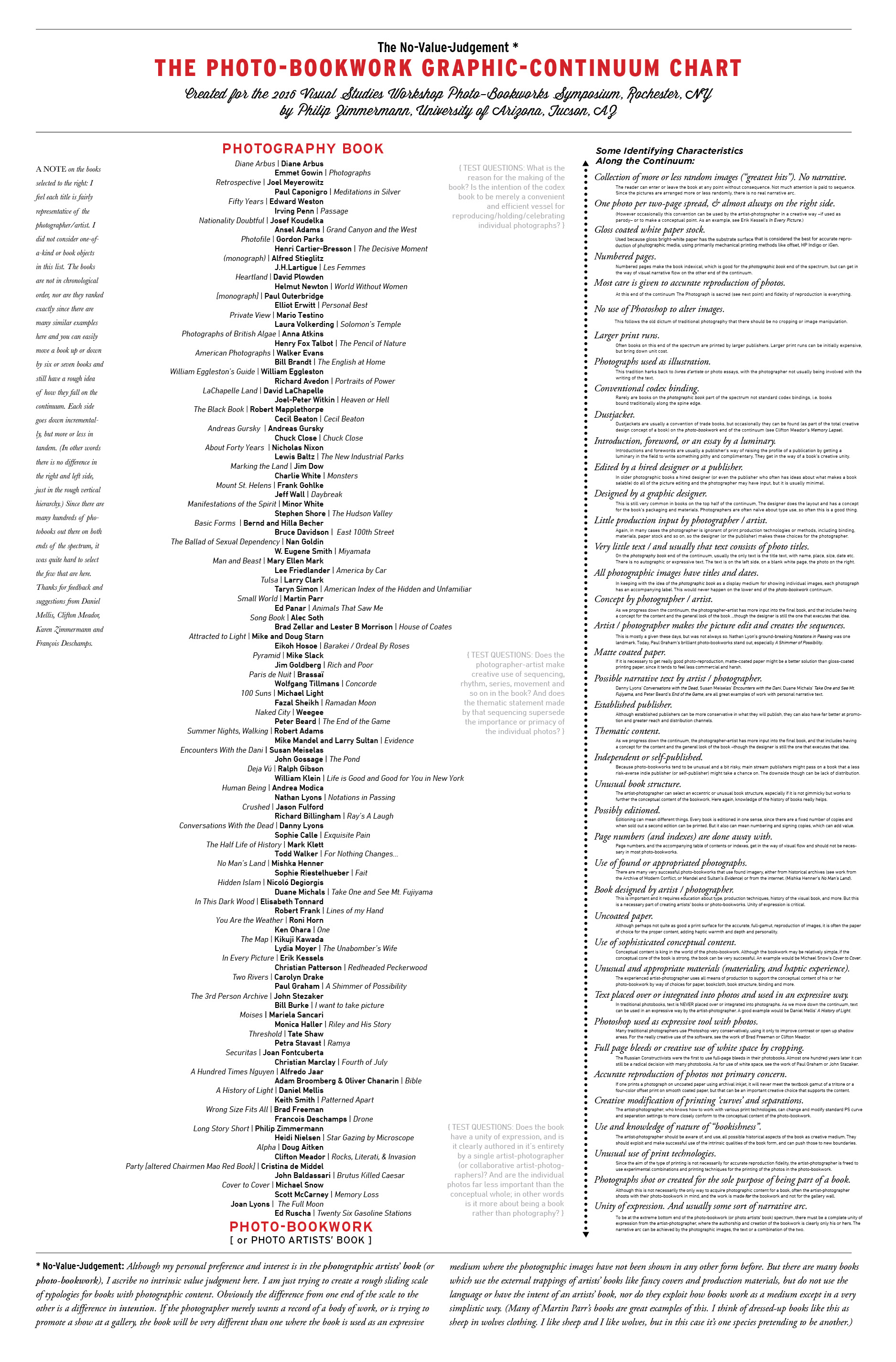For this post I asked permission from Phil Zimmermann to publish a brief excerpt of his presentation at the 2016 Photo-Bookworks Symposium June 23-25 that I organized for Visual Studies Workshop, Rochester, NY. The following excerpt includes the core of Zimmermann’s position and the graphic component here is a kind of visual essay unto itself. It should also be mentioned that Zimmermann’s creation of the graphic essay was inspired in part by the re-organization of his personal book collection into categories of photobook, photo-bookwork, artists’ book, etc.
--Tate Shaw
“The term artists’ books has been much bandied about in the photo community in recent years and is, I think, used perhaps a little too loosely. What makes a photo-based book an artists’ book? To step back a little, the term artists’ book, even outside the photobook world, is a term that is still contested, and there are many camps that argue about what characteristics determine what makes an artists’ book an artists’ book. I think that most practitioners would agree that an artists’ book is a book that is not merely a reproduction of images or texts that exist in another form, but a new time-based medium unto itself, with a unified conceptual content. The ‘book artist’ is the author and in control of the creation of the entire book. In almost all cases this would eliminate the use of a book designer or even possibly a pushy publisher who ‘knows what will sell.’
Unless the designer is under the close supervision of the artist, the artist him or herself must have the overall creative vision with an artists’ book. Collaborations do exist, like Marshall McLuhan and Quentin Fiore’s The Medium is the Massage, and there, all contributors are given credit as the creators. This idea of what an artists’ book should be requires that the artist-photographer must educate themselves on book structure, history of visual books, methods of production, typography, and, on a more meta level: how to think and work in terms of a time based-medium, using sequence, rhythm, narrative arc and so on.
So I went through my artists’ book collection and carefully pulled out any photobook that I thought was either by artists who self-identified as ‘photographer,’ or where I felt that photography was the primary subject and medium that was used. Many of these books were ones where the photos were not used in the standard ubiquitous monograph form that so many photographers love, nor were they coffee-table-type publications that galleries supported by subvention, and used as a form of publicity to raise the profile of their stable of artists. Those above-mentioned books were already segregated out and in my photography book section, they clearly did not belong in the artists’ book section. Of course there is nothing wrong with the photographic monograph book.
The question is: ‘What is it that you want to use the book for?;’ the photographer must ask themselves that. The monograph does the job of promoting single photographs or bodies of work, if that is what one needs and wants to do.
But books are capable of much more.
I have given out a chart which is a graphic expression of what I see as a linear continuum that follows the standard photographic book on one end, onward to the other end, where the photo-bookwork book is situated, the photo world’s version of the artists’ book.”
--Philip Zimmermann, at the VSW Photo-Bookworks Symposium, June 24, Rochester, NY


